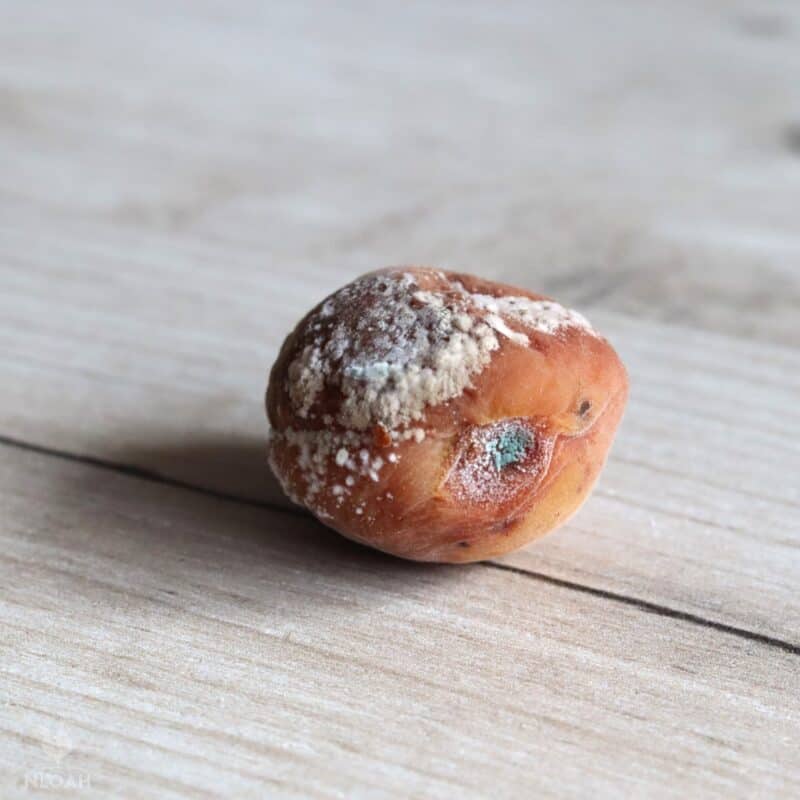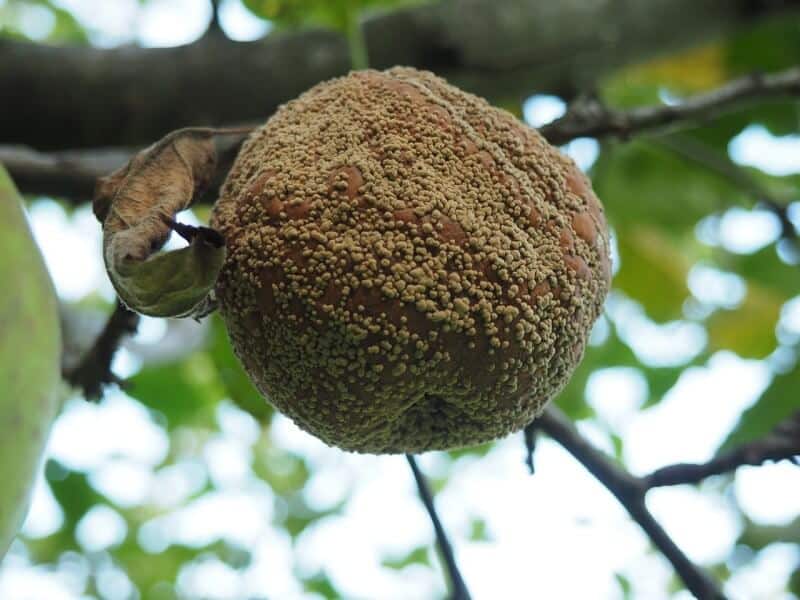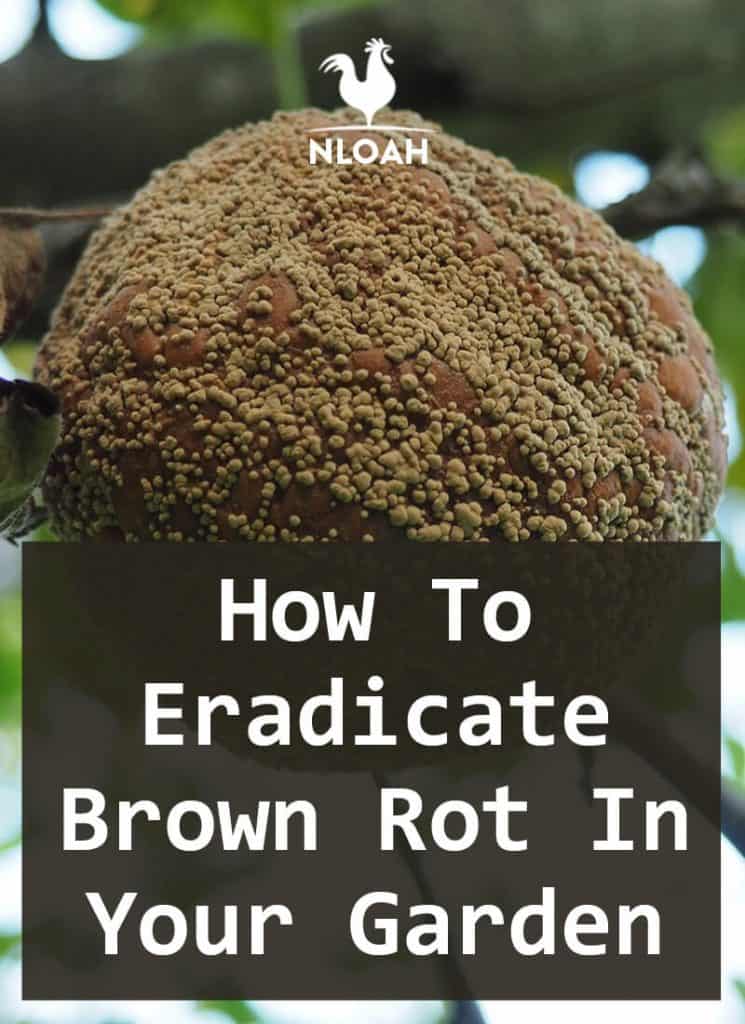Brown rot is a fungal disease that particularly affects peach, plum, apricot, cherry, nectarines, and other stone fruit trees. This type of fungal infestation becomes especially problematic during spring when wet and humid conditions abound.
The brown rot fungus impacts not only the flowers on fruit trees, but their overall yield capacity. A robustly healthy fruit tree can survive with minimal yield deficiency, but spotting the tree fungal disease early and controlling its spread is essential.

Unfortunately, brown rot is difficult to detect and equally hard to curtail its spread once it has latched onto a single fruit tree in your orchard.
Once brown rot takes hold of a tree, the expected harvest can easily be reduced by at least 50%. Even after plucking the fruit from the tree, brown rot problems still usually persist.
Fruit harvested from an afflicted tree are usually bruised or injured in some way, and are far more susceptible to rotting when exposed to heat or moisture.
Brown Rot Facts and Signs
- Brown rot fungus can find its way into a fruit grove or garden through airborne spores from either volunteer trees or wild trees and bushes.
- Honey bees, vinegar flies, and sap beetles have also been known to carry brown rot fungus spores from place to place. These insects are particularly lured by rotting fruit. When these insects land on a piece of rotting fruit to dine, they carry away fungal spores with them to the next place they stop to eat… which is often on healthy fruit trees.
- When fruit becomes infected with brown rot, the fungal spores travel back onto the twigs and branches of the tree.
- The first signs of brown rot typically present during the spring. Brown spots popping up on emerging blossoms is one sure sign of this type of fungal infection.
- The afflicted blossoms ultimately produce a gummy matter that sticks to twigs and causes dieback. The blossoms also collapse onto themselves before dying.
- Fruit that manages to develop from still healthy flowers on an affected tree also becomes infected with the fungus as it grows. The brown rot will usually grow to fill the entire piece of fruit.
- Brown rot fruit are often referred to as “mummies” because they shrivel up and dry out due to the fungus growing upon it.
- Gray spores in great masses form of the surface area of both mummy fruit and rotting fruit when it is from a brown rot infested tree.
- Fruit that has sustained injury from various insects eating upon them creates an easy access point for the brown rot fungus to grow.
- During the spring, brown rot spores get the chance to spread when they are blown or splashed from their resting placed onto new growth in the fruit grove – as well as onto gardening tools.
- This type of fungal infestation can winter over on both garden debris on the ground and on twigs it has attached itself to before the cold weather arrived.
- When mummified fruit is allowed to remain on the ground, even when it is partially buried in the dirt, mushroom-style growth called apothecia emerges. This new growth produces another type of destructive spore that also causes infection in growing crops.
- Brown rot spores are most active when the temperature is between 68F to 77F (20C to 25C), and the weather is wet from the formation of dew or rain.
- This destructive fungus also attracts unwanted fruit flies to your growing area.
- Brown rot over winters in a stagnant state, but begins to re-emerge as soon as the temperature rises.

Signs Of Brown Rot
- Check your fruit trees diligently for the formation of gray masses. The masses will rot every bit of healthy tissue they come into contact with on the tree.
- Both young and mature fruit trees will develop brown spots once the fungus begins to grow and spread rapidly. The fungus spreads more quickly as the temperature climbs.
How to Combat Brown Rot
- To treat fruit tree twigs that are infested with brown rot, prune at least four but preferably six inches below the visible signs of the spore damage. Look for dead or sunken tissue on branches to located when the infection began.
- Thoroughly disinfect all gardening and pruning tools after each use. Soak the tools in rubbing alcohol, bleach, or distilled white vinegar for at least 1 minute before wiping dry with a clean cloth and storing.
- Clear all debris away from the fruit grove area, including volunteer grown and tall grass or weeds.
- Keep proper ventilation between your fruit trees by spacing them far enough apart of pruning. The air flow will allow the trees to dry quicker when they become moist, and the void in-between will make it more difficult for spores to spread easily due to wind and rain.
- Burning brown rot infested branches could cause the spores to spread in the air, movement created during transport to the burning spot and by the growing flames.
- Water trees at ground level to help prevent dislodging brown rot spores during the process. You cannot avoid loosening of the spores when it rains, but you can reduce the amount of exposure the upper portions of the tree have to water flow. Hopefully this will give you more time to diligently inspect and prune out the spore-infested portions of the tree.
- Treat an then seal any wounds in the tree that are created during the pruning process to avoid creating an easy opening into the tree for the spores.
- Both copper-based fungicides and sulfur-based powders can be used to help prevent the growth or spread of brown rot on fruit trees.
- Make your own brown rot prevention and treatment spray by combining four drops of Blue Dawn liquid dish soap with 1 cup of milk, and 1 quart of water. Spray the fruit trees every 14 days with the mixture to prevent and curtail brown rot.
The best way to not only prevent brown rot but a host of fruit grove and garden infestation is to inspect crops from top to bottom on a regular basis, clean gardening tools with a squirt bottle of your chosen solution after using on each plant (I know, very time consuming), and keeping growing areas tightly landscaped and cleared of debris year-round.


Tara lives on a 56 acres farm in the Appalachian Mountains, where she faces homesteading and farming challenges every single day, raising chickens, goats, horses, and tons of vegetables. She’s an expert in all sorts of homesteading skills such as hide tanning, doll making, tree tapping, and many more.

Did you ever hear of using a garlic spray to control brown rot?
Hi Tara
I am writing you from Kansas City Mo .
I have two trees in particular that seem
to bear fruit , an apple and a cherry tree.
However once the fruit sets and it’s sets fruit well,
I am getting complete brown rot on fruit. The leaves are curling
and the fruit turns brown and drops , I am told that it is a fungus.
Can you tell me what and when to spray my trees with with .
Thank You